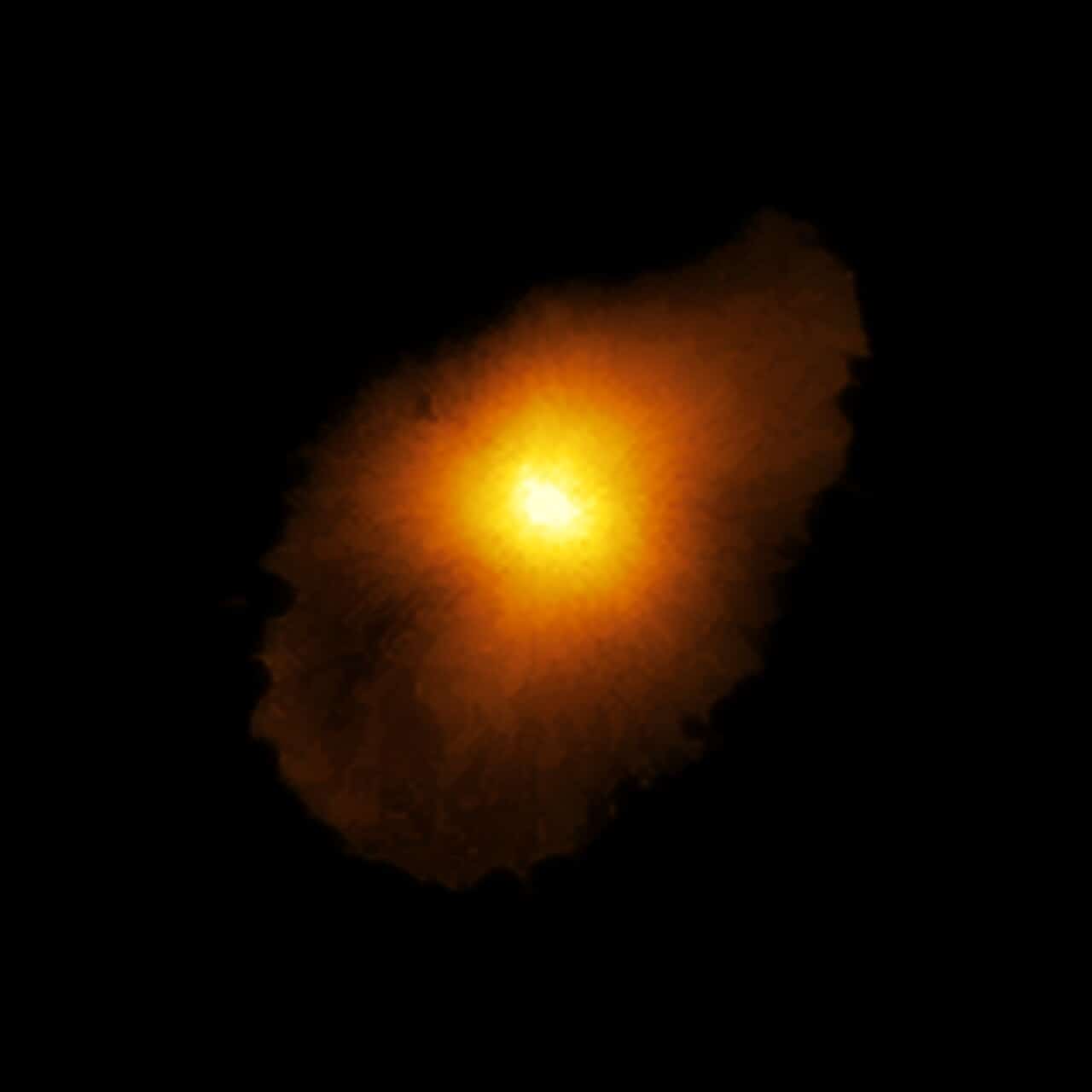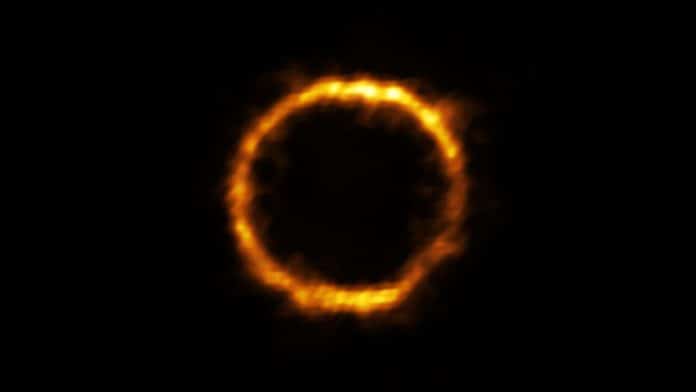Astronomers using the Atacama Large Millimeter/submillimeter Array (ALMA) has spotted an extremely distant and, therefore, very young galaxy that looks surprisingly like our Milky Way. The galaxy called SPT0418-47 is surprisingly unchaotic, negating speculations that all galaxies in the early Universe were turbulent and fierce.
When it comes to distance, the galaxy lies far distant. Its light takes 12 billion years to reach us. The observations reveal that the galaxy doesn’t have spiral arms.
It has at least two features typical of our Milky Way: a rotating disc and a bulge, the large group of stars packed tightly around the galactic center. This unexpected discovery challenges our understanding of how galaxies form, giving new insights into the past of our Universe.
Francesca Rizzo, a Ph.D. student from the Max Planck Institute for Astrophysics in Germany, said, “This result represents a breakthrough in the field of galaxy formation, showing that the structures that we observe in nearby spiral galaxies and in our Milky Way were already in place 12 billion years ago. This is the first time a bulge has been seen this early in the history of the Universe, making SPT0418-47 the most distant Milky Way look-alike.”

Credit:
ALMA (ESO/NAOJ/NRAO), Rizzo et al.
Co-author Filippo Fraternali, from the Kapteyn Astronomical Institute, the University of Groningen in the Netherlands, said, “The big surprise was to find that this galaxy is quite similar to nearby galaxies, contrary to all expectations from the models and previous, less detailed, observations. In the early Universe, young galaxies were still in the process of forming. Hence, researchers expected them to be chaotic and lacking the distinct structures typical of more mature galaxies like the Milky Way.”
“Studying distant galaxies like SPT0418-47 is fundamental to our understanding of how galaxies formed and evolved. This galaxy is so far away we see it when the Universe was just 10% of its current age because its light took 12 billion years to reach Earth. By studying it, we are going back to a time when these baby galaxies were just beginning to develop.”
It is quite difficult to detect distant galaxies with even the most powerful telescopes as such galaxies appear small and faint. The team overcame this obstacle by using a nearby galaxy as a powerful magnifying glass—an effect known as gravitational lensing—allowing ALMA to see into the distant past in unprecedented detail. In this effect, the gravitational pull from the nearby galaxy distorts and bends the light from the distant galaxy, causing it to appear misshapen and magnified.
Rizzo said, “The gravitationally lensed, the distant galaxy appears as a near-perfect ring of light around the nearby galaxy, thanks to their almost exact alignment. The research team reconstructed the distant galaxy’s true shape and the motion of its gas from the ALMA data using a new computer modeling technique. When I first saw the reconstructed image of SPT0418-47, I could not believe it: a treasure chest was opening.”
Co-author Simona Vegetti, also from the Max Planck Institute for Astrophysics, said, “What we found was quite puzzling, despite forming stars at a high rate, and therefore being the site of highly energetic processes, SPT0418-47 is the most well-ordered galaxy disc ever observed in the early Universe. This result is quite unexpected and has important implications for how we think galaxies evolve.”
Astronomers noted, “However, that even though SPT0418-47 has a disc and other features similar to those of spiral galaxies we see today, they expect it to evolve into a galaxy very different from the Milky Way, and join the class of elliptical galaxies, another type of galaxies that, alongside the spirals, inhabit the Universe today.”
“This unexpected discovery suggests the early Universe may not be as chaotic as once believed and raises many questions on how a well-ordered galaxy could have formed so soon after the Big Bang. This ALMA finding follows the earlier discovery announced in May of a massive rotating disc seen at a similar distance. SPT0418-47 is seen in finer detail, thanks to the lensing effect, and has a bulge in addition to a disc, making it even more similar to our present-day Milky Way than the one studied previously.”
Journal Reference:
- A dynamically cold disk galaxy in the early Universe, Nature (2020). DOI: 10.1038/s41586-020-2572-6
